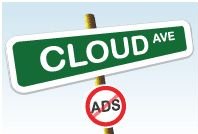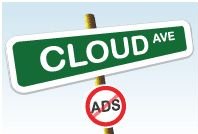Ah, the end of the fist week! The new baby, CloudAve is 7 days old! (..and I’m alive… )
)
We launched with a discussion on Harry Debes’s famous prediction, i.e. the imminent collapse of the SaaS market in two years. I doubt he realized just how much he re-energized the entire SaaS business, analyst obeservers – he certainly sparked a healthy discussion, even including Software Icon Dave Duffield, who refuted Debes’s argument. He should know, having been on both sides of the fence. (The podcast is available on CloudAve).
 On my personal blog I don’t have to be as politically correct as on CloudAve, so here’s my summary: they tried SaaS, could not crack it, so concluded the market as a whole did not matter – a strategic mistake.. or… well, as they say, a picture says a thousand words. Ironically, the collapse of the US financial markets may just put things in a new prospective … more on this soon.
On my personal blog I don’t have to be as politically correct as on CloudAve, so here’s my summary: they tried SaaS, could not crack it, so concluded the market as a whole did not matter – a strategic mistake.. or… well, as they say, a picture says a thousand words. Ironically, the collapse of the US financial markets may just put things in a new prospective … more on this soon.
Ben compares the advent of Cloud Computing to corporate cars being replaced with allowances, while I present frustrating personal experience that could have gone smoothly using On-Demand tools.
We often talk about Cloud Computing and Software as a Service interchangeably, but are they really the same? Krish answers in a mini-series discussing the differences, i.e. segmenting out Infrastructure/Hardware as a Service (HaaS), Platform as a Service (PaaS) and Software as a Service (SaaS). In the second part of his mini-series Krish goes on a myth-busting mission, clearing up several common misunderstandings. His piece on Governor Palin’s email hijack episode could very well be considered myth-busting, too.
Dan Morrill addresses why Anti-Virus in the Cloud can offer more efficient protection and is also major relief to owners of slower computers, whose resources can be completely bogged down by the frequent Av updates and scans.
Ben, so far the most prolific author reviews Oprius, an online productivity tool for sales professionals, then proves that the second “S” in SaaS is the most important, presenting two service / help desk oriented services: Zendesk and HelpStream. He discusses NetSuite’s launch in Australia, then starts a discussion on Channels, largely triggered by another NetSuite related move – this may very well become an ongoing thread.
Talk about threads, next week we are launching a new daily feature, CloudNews – the title says it all.
If you’ve been reading CloudAve, thank you, if not, why not head over and try … or perhaps just grab our feed.
See you on Cloud Avenue next week.

 (OK, I sinned. Mea Culpa. I’ve just cross-posted an entire article, which is not the best behavior. But it’s not every day that I
(OK, I sinned. Mea Culpa. I’ve just cross-posted an entire article, which is not the best behavior. But it’s not every day that I  )
) P.S. The CloudAve platform is not exactly in nice order yet. It’s work-in-progress.
P.S. The CloudAve platform is not exactly in nice order yet. It’s work-in-progress.  My regular readers no doubt noticed that I’ve been blogging less recently. I’m not about to give up ( although that’s a fashionable trend nowadays), in fact I’ve increasingly felt dissatisfied not being able to talk about everything I wanted here… be it industry trends, opinion pieces or product reviews.
My regular readers no doubt noticed that I’ve been blogging less recently. I’m not about to give up ( although that’s a fashionable trend nowadays), in fact I’ve increasingly felt dissatisfied not being able to talk about everything I wanted here… be it industry trends, opinion pieces or product reviews.

 The first time I wrote about
The first time I wrote about 
 As for the one millionth user: Zoho CRM user Dean Detton of Prestige Automation Inc has been invited to celebrate at the Zoho Party during the
As for the one millionth user: Zoho CRM user Dean Detton of Prestige Automation Inc has been invited to celebrate at the Zoho Party during the 



Recent Comments